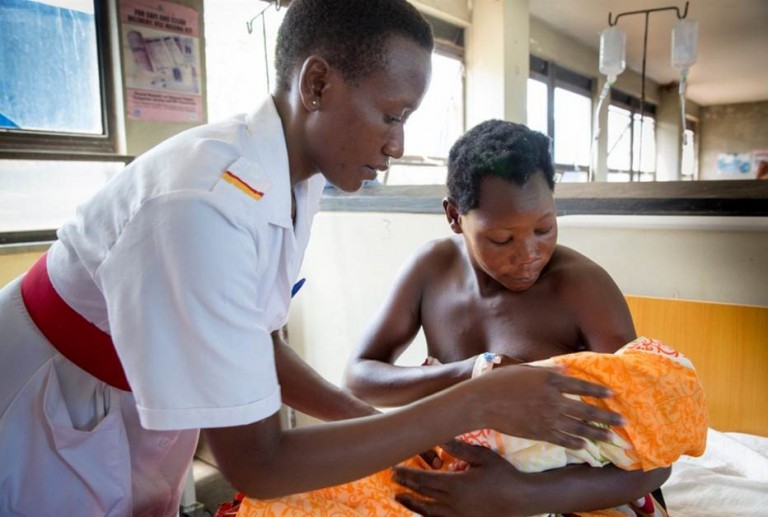Health Workers: the backbone of strong health systems
By Chunmei Li, Director, Johnson & Johnson
This story was originally published on the Healthy Newborns Network Blog.

Health workers are heroes.
Let me tell you about a family I met on my travels. The baby’s name was Michael. His mother, Proshe, was one of the “lucky” ones able to get to a clinic to give birth to her child.
But at the moment of birth, at the split second when the room should have been filled with the sound of Michael’s first cry, the room was silent. After a few attempts, the doctor (who probably experienced this scenario hundreds of times before) issued an order to stop, and left the room.
But Michael was a fighter, and Eva, the midwife who attended his birth, had been trained to deal with birth asphyxia. The doctor left the room, and Eva sprung into action and put her newborn resuscitation skills to work.
The next day, the doctor came back to the hospital and saw Proshe, happy and breastfeeding her baby. Confused, he asked what happened. He was told that Eva had resuscitated the baby, and that both mother and child were healthy and well. A trained health worker had saved this child, sending a family home to celebrate their newest blessing. Without access to skilled care, this family would have otherwise gone home to mourn.
Health workers like Eva work long hours, often in difficult environments, to ensure people in their communities get the care they need. But there aren’t enough of them to meet demand. Globally, 30% of women give birth without a skilled birth attendant. In Africa, that number is higher – almost 50%. This shortfall in health workers, expected to be more than 18 million by 2030 if current trends continue means that universal health coverage in low and middle-income countries will not be reached unless concerted action is taken to strengthen the global health workforce.
The world is at a crossroads when it comes to the health work force – and we have a major opportunity to close the gap. The Global Strategy and Human Resources for Health: Workforce 2030 and the Five-Year Action Plan of the UN Secretary-General’s High-Level Commission on Health Employment and Economic Growth (HEEG Commission) – both unanimously approved since 2015 at the World Health Assembly – provide a path to build the health workforce of the future. Workforce 2030 and the HEEG Commission show the economic benefits of making investments in the health work force, recognizing that the health sector drives well-paying, long-term employment and sustainable development, and is the key driver in achieving health and well-being for all.
Health workers are truly the backbone of any health system. Proshe experienced this first hand, when a trained frontline health worker made the difference and saved her baby’s life. By implementing the recommendations in Workforce 2030 and HEEG Commission, we can build the health work force of the future, creating jobs and lifelong learning opportunities so that more families can thrive.
